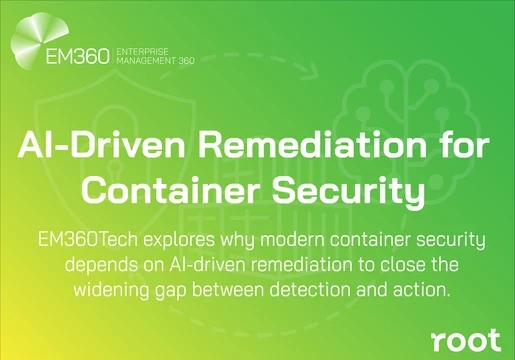Necessity is the mother of invention. As the needs of the digital enterprise have changed, so have the strategies required to secure it. This is evident in the shift from traditional security tools to cybersecurity solutions like Managed Detection and Response (MDR).

The Problem with Traditional Tools
Traditional cybersecurity measures were signature-based, perimeter-bound, and limited to the data you could extract from your network. While this worked for a while, these traditional measures became inadequate as attackers became more advanced. Here's why:
- Signature-based: The security industry's success in signature-based detections led attackers to develop alternative approaches. As cybercriminals continued to become more experienced, they began designing malware signatures to evade the detection of sophisticated security detection solutions, such as polymorphic malware. This malware continuously changes its shape and signature in real time. This, along with code obfuscation, makes detection more difficult. To combat this, today’s detection tools need to look for behaviors, not identifiers.
- Perimeter-bound: Security tools like firewalls, intrusion detection systems, and antivirus software were designed to operate within the boundaries of the traditional perimeter. This perimeter safely protected everything valuable behind it, including users, systems, devices, applications, and architecture. However, with the emergence of IoT devices, cloud computing, remote work, WiFi networks, SaaS apps, and more, that traditional perimeter has disappeared. To adapt, security solutions need to live everywhere at once, requiring lots of automation, processing power, and visibility.
- Limited network threat intelligence: Previously, a significant limitation of existing tools was that threat intelligence primarily relied on internal network data. Each network was a closed system, and threats were often analyzed using only that network’s data, context, and clues. However, attackers don’t work in isolation, and gaining a broader perspective of the overall threat landscape can offer valuable insights.
Another important aspect underlying all these points is that traditional tools were primarily reactive in nature. They would only respond to threats when they appeared, rather than proactively preventing, or identifying. Given the aggression of today’s adversaries, a shift was necessary. Managed Detection and Response solutions were the answer.
Read more: Top 10 Biggest Cyber Attacks in History
The Need for MDR
The world was already experiencing significant technological advancement when the events of the past few years pushed us even further. As a result, organizations noticed a huge divide between what existing solutions could do and what they needed them to do.
Traditional tools drew a line in the sand. With the continuous influx of more users, devices, applications, and environments into the network, the need for comprehensive tools became apparent. These tools had to be capable of protecting all entities, regardless of their location or nature. As ISACA states, identity became the new perimeter, and all of those myriad identities (of devices, machines, and humans) now required protection. Security needs were exponentiated virtually overnight.
The functionality of traditional tools was limited as they were siloed and worked in isolation. However, with the changing landscape, they now needed to interact and integrate immediately to extract critical data from other tools and give organizations visibility across their complex environments.
Traditional tools were also run manually, with admins checking the logs, writing the scripts, validating the alerts, chasing after the threats, and ultimately shutting them down individually. With the surge in cloud, the attack surface expanded. Humans could no longer keep up as megabytes turned into petabytes of traffic.
Waiting for an attack and attempting to fix the situation afterwards was no longer effective. With the proliferation of attacks and their complexity, it’s became crucial to anticipate and detect them beforehand. This shift from traditional tools was necessary to better navigate the evolving threat landscape and proactively defend against potential attacks.
How MDR is Different
This is where the MDR comes in. Managed Detection and Response solutions were created in direct response to sudden gaps in the security status quo. MDR is a collaborative and automated approach that is a step toward a proactive security model, which is where traditional security solutions proved to be ineffective.
According to security operations platform provider, ReliaQuest, Managed Detection and Response “[combines] human expertise, advanced analytics, and threat intelligence to provide organizations with threat detection and incident response.” They note that the defining characteristics of an MDR solution include:
- Threat Detection: Autonomously detect malware, data exfiltration, insider threats, and more.
- Expert Analysis: Leverage human expertise and technology to investigate incidents.
- Incident Response: Play an integral role in validating, containing, and eradicating threats.
- Incident Reporting: Deliver regular reports on the severity of incidents and actions taken.
By autonomously monitoring those petabytes of network traffic companies now generate, MDR makes yesterday’s security doable in today’s environments. With the overwhelming volume of data, relying solely on human analysts would be impractical. To address this, an MDR solution aggregates data from disparate solutions within your network, scans for behavioral-driven patterns of attack, eliminates false positives, incorporates threat intelligence, and presents only relevant information for analysis. That way, by the time you get an alert, you can act promptly.
Along with its monitoring capabilities, you can also trigger an MDR to automatically remediate based on predefined triggers. This comprehensive network visibility allows teams to be proactive in their security approach and stop malicious exploits before potential harm.
As Security Intelligence states, “You didn’t need auto insurance or anti-lock brakes before cars were invented. Still, if you want to move at modern speeds, these things are essential.” Yesterday’s tools were fit for yesterday’s security problems. Today, MDR can help you do more.







Comments ( 0 )